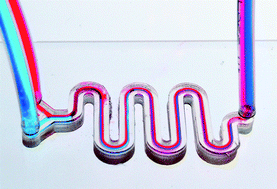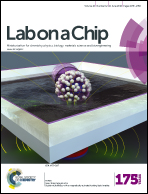3D-printing of transparent bio-microfluidic devices in PEG-DA†
Abstract
The vast majority of microfluidic systems are molded in poly(dimethylsiloxane) (PDMS) by soft lithography due to the favorable properties of PDMS: biocompatible, elastomeric, transparent, gas-permeable, inexpensive, and copyright-free. However, PDMS molding involves tedious manual labor, which makes PDMS devices prone to assembly failures and difficult to disseminate to research and clinical settings. Furthermore, the fabrication procedures limit the 3D complexity of the devices to layered designs. Stereolithography (SL), a form of 3D-printing, has recently attracted attention as a way to customize the fabrication of biomedical devices due to its automated, assembly-free 3D fabrication, rapidly decreasing costs, and fast-improving resolution and throughput. However, existing SL resins are not biocompatible and patterning transparent resins at high resolution remains difficult. Here we report procedures for the preparation and patterning of a transparent resin based on low-MW poly(ethylene glycol) diacrylate (MW 250) (PEG-DA-250). The 3D-printed devices are highly transparent and cells can be cultured on PEG-DA-250 prints for several days. This biocompatible SL resin and printing process solves some of the main drawbacks of 3D-printed microfluidic devices: biocompatibility and transparency. In addition, it should also enable the production of non-microfluidic biomedical devices.

- This article is part of the themed collection: 3D Printing

 Please wait while we load your content...
Please wait while we load your content...